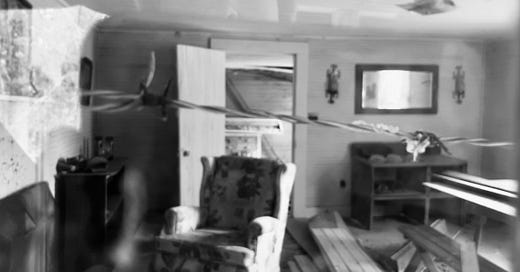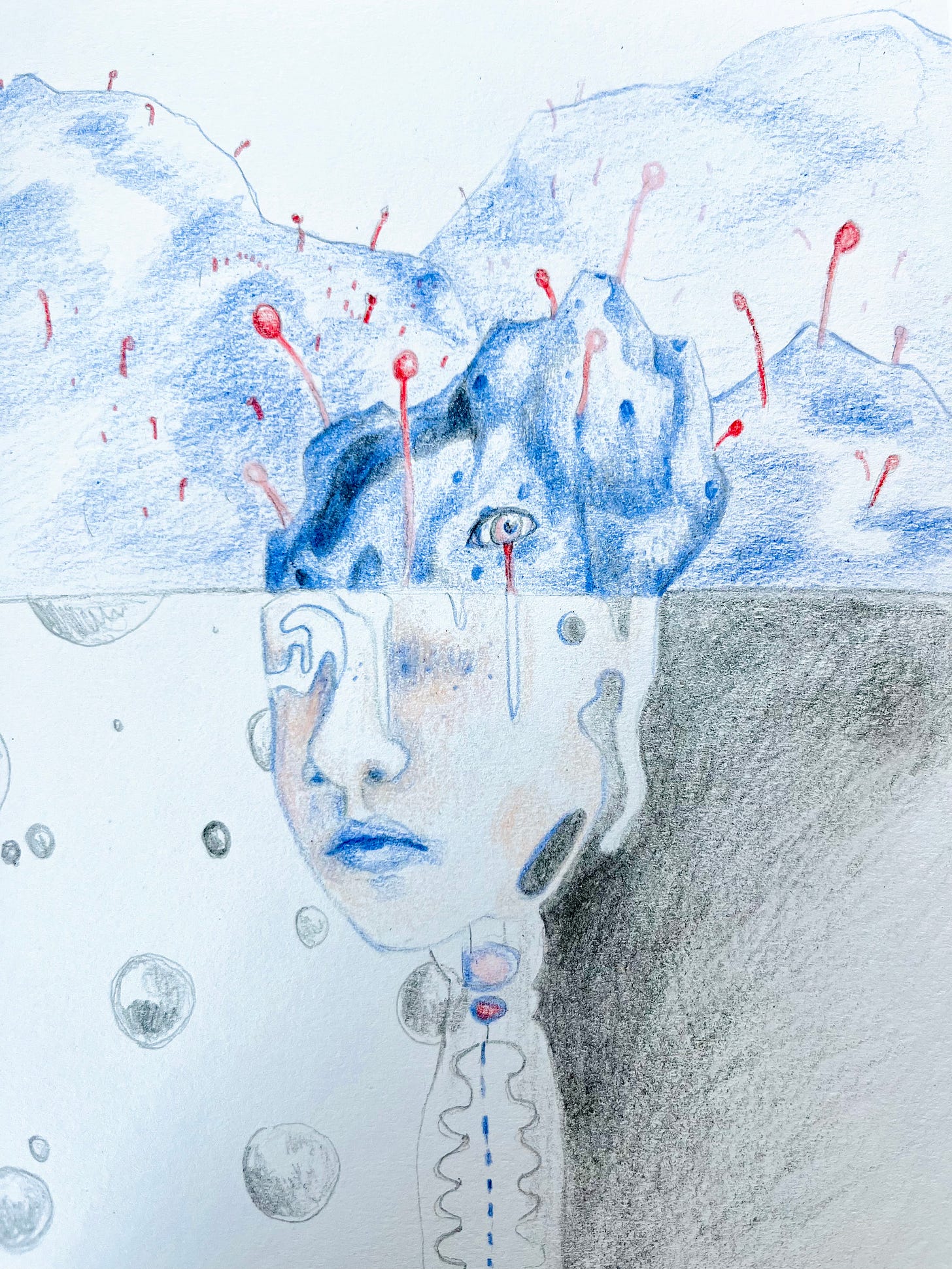Doe a dear, a female dear…
Last night, an empty A-train car filled with memories of my mother’s voice. Huddled in my own mind, the song was a spectre, and I couldn’t tell if it was external or within me until a little boy’s voice erupted into A LONG LONG WAY TO RUN.
I jolted as the car took off again and nearly vomited into the green bag between my legs. After dosing me with pain meds and scratching their heads at my condition, the ER doctors sent me out to fetch an Uber, but my spirit and wallet chose the trains.
The nanny laughed at her adventurous little heathen, interrupting her song and clapping. They’d been particularly alert for just after midnight, and I realized they’d sat beside me right before triage. The boy grinned through a cottony wrap around his head and nose unfazed.
Sew, a needle pulling thread. La, a note to follow so…tea….
I hadn’t heard the song in ages, but someone, perhaps the part of me wiser than myself, kept singing it until I’d stumbled home and into bed and body eased into rest. Memory became my mother — but the version from years ago. Perhaps, this is the voice I mother myself with, when I remember the kindness it once held.
Memories form by strength.
The brain is like a southern sky on July 4th — synapses spark when neurons are lit, and cascade across the brain leaving glimmers in their wake. One could imagine moon jellies in a Maine harbor, lighting up in synchronicity with waves. Smoke ghosts remain, sometimes drifting in the electrical storm for minutes, others mere milliseconds. It reminds me of touch-and-go communication. Hello to a stranger, bump on the subway. But some communication stays. It is here where new connections fuse and potential for memories emerge.
Memory forms between bridges of electrical connection; they remain when one neuron consistently activates another, generating a spike called an action potential. This builds strength, or:
Potential for further action; potential for deeper connection.
If communication fades, synaptic connection weakens and potential dwindles or eventually dissipates. Memory requires both: increase and decrease in synaptic strength. This is called synaptic plasticity. In other words:
Memory requires change.
Two neurons alone do not create memories. In this way, the brain is musical.
I sip my chamomile tea. Steam drifts into sunlight that reflects from the adjacent building and reddens my arms. I remember pouring chamomile this morning, after half-scooping Earl Grey but chose to listen to my headache. An “ensemble” of neurons reanimate to recall this. Memories are held in different collections, or ensembles, of neurons; sometimes they sing different songs.
I know chamomile is tea and remember its taste. I also remember it differently than Earl Grey, the former light and faintly apple-scented, the latter robust and floral with a zing that stays on your tongue. These taste memories are held within different songs, but perhaps under the same “tea” ensemble.
Collections of neurons mingle, entwine with others. I remember chamomile as tea; also as a helpful herb, one that lulls my mind to rest; also as a daisy waving to summer sun in a humid breeze. The image sparks another song. My hands, two sizes smaller than now, shove dirt over seeds alongside leathery fingers, whisper-thin but warm when they brush mine. My grandmother’s voice hums with the carpenter bees. Memory reaches. Sparks cascading communication and entanglement with other neural ensembles into what can seem an endless cacophony. Yet it remains clear [ mostly ] as an orchestrated response where each knows where to blend within a larger song.
Memory is call and response.
Call and response is one of the oldest, most intuitive forms of vocalization and collaborative music-making. Women gathering fruit across the African Continent, before it was Africa, and before there was Duke Ellington, used this type of communication to relay information and stay in contact within often dangerous landscapes. In the Central African Republic, Women from the Baka ethnic group still sing while gathering mushrooms and food staples. The forest fills with a polyphony that connects them through dense foliage, ping-ponging tunes that touch and build from one another. A mother bundles her baby on her back, brings her daughter to carry their finds and instructs her to listen — she knows her children will learn a knowledge older than herself, and how to stay safe, as she learned from her mother.
Memory is call and response between moment to moment, a song between then and now.
Sometimes this is torment, a bridge between the traumatic experience and the after: in other words, trauma. A body feels the knife that sliced your wrists decades ago and doubles in agony. But memory is how we learn. You are here to feel it still. You survived.
Doe, a dear, a female dear
Ray, a droplet full of sun.
I am made of moments, and spaces between. When the sun disappears and I wander through dim subway tunnels and nighttime fog, I remember my voice, and that memories are made of change. And they persist through it. And this is resilience.
Me, a name I call myself
Fa
A long long way to run.
sketches: under construction II








